
 |
|
 |

| Each atom that makes up a substance is a time magnet. When atoms are arranged not in random directions but all in the same direction, the substance is a permanent magnet. Magnetism and electricity are very closely related, so that the flow of electricity through a conductive wire generates a magnetic field, and conversely a change in a magnetic field produces a flow of current in a conductor. |
| How is Magnetism Produced? The electrons in an atom spin as they rotate about the nucleus. This spinning motion creates a magnetic effect in each electron, which together forms a magnetic field around the atom. |
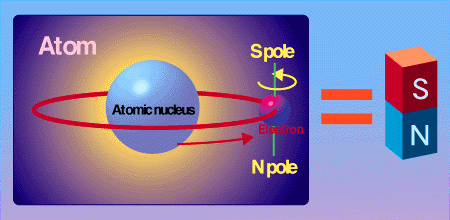 |
| Normally, the atoms in any substance are oriented in random fashion throughout the substance. This means that their individual magnetic fields cancel each other, and the substance as a whole does not appear magnetically charged. |
In a permanent magnet, all of the electrons are oriented in the same direction. This means that the substance as a whole acts as a magnet. The lines that show the direction of the magnetic field are called magnetic lines. |
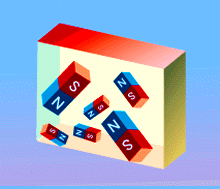 |
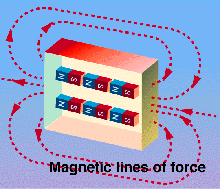 |
| Even when the atoms are oriented randomly, exposure to a nearby magnet may cause them to line up with the magnetic field. Substances that do this easily, such as iron or nickel, can be 'magnetized.' Other substances, in which the atoms remain randomly oriented even when exposed to a magnet, such as copper, wood or plastic, cannot be magnetized. |
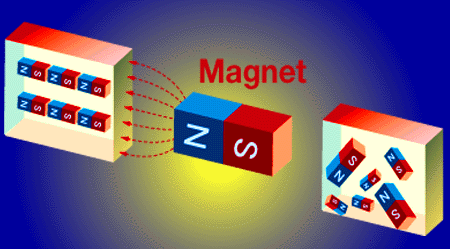 |
| What is the Relation Between Electricity and Magnetism? |
| When a coil is wrapped around an iron bar and electric current is passed through the coil, the iron bar picks up a magnetic field, and becomes an 'electromagnet.' The strength of the magnetic field is proportional to the size of the current flow. The relation is similar to the way wind passing through a windmill (current flow) flows at right angles to the plane of rotation of the windmill blades (creation of the magnetic field). | |
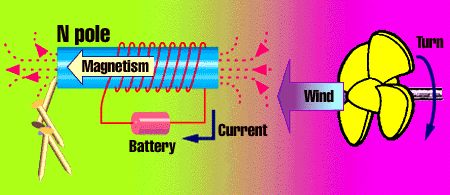 | |
|
If a permanent magnet is inserted and withdrawn through the center of the coil, it causes an electric current to flow in the coil. The direction of the current flow is in opposition to the change in the magnetic field, so that the current is reversed each time the permanent magnet is inserted or withdrawn. This is the principle of the electric generator. The relation is similar to the way a windmill revolves (current flows) in response to the wind passing through it (movement of the magnet). If the wind reverses direction, the windmill will also rotate in the opposite direction. | |
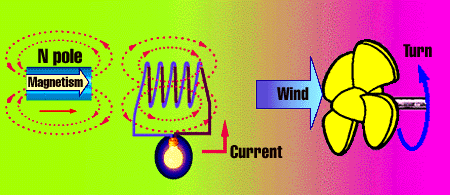 |
|


|
Return to the Gakushukan Home Page | ||

|
Back | Forward |

|